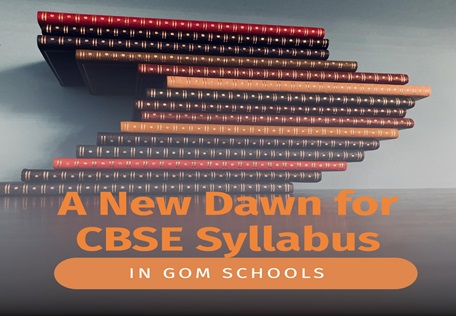Introduction
The Government of Maharashtra (GOM) has recently made a significant decision that could revolutionize education in the state. The government has announced its intention to introduce the Central Board of Secondary Education (CBSE) syllabus in more than 1,000 government schools across Maharashtra. This move is expected to have far-reaching implications for students, teachers, and the overall educational landscape of the state.
Understanding the CBSE Syllabus
The CBSE syllabus is renowned for its comprehensive coverage of subjects, emphasis on critical thinking, and focus on holistic development. It is followed by thousands of schools across India and is widely recognized for its quality and standards. The CBSE curriculum is designed to prepare students for higher education and competitive exams, such as the Joint Entrance Examination (JEE) and the National Eligibility and Entrance Test (NEET).
Rationale Behind the GOM Decision
The GOM’s decision to adopt the CBSE syllabus in government schools is driven by several key factors:
- Improving Educational Standards: The government aims to enhance the quality of education provided in government schools. By adopting the CBSE syllabus, it hopes to align the curriculum with national standards and provide students with a more competitive edge.
- Broadening Opportunities: The CBSE syllabus is widely accepted by universities and colleges across India and abroad. By following the CBSE curriculum, students from government schools will have better opportunities for higher education and career advancement.
- Encouraging Student Choice: The introduction of the CBSE syllabus will give students more flexibility in their educational choices. They will have the option to choose between the state board and the CBSE curriculum, depending on their preferences and career goals.
- Promoting Uniformity: The CBSE syllabus provides a degree of uniformity across the country, ensuring that students from different regions receive a similar quality of education. This can help to bridge the educational gap between urban and rural areas.
Challenges and Considerations
While the GOM’s decision to adopt the CBSE syllabus is a positive step, it also presents certain challenges and considerations:
- Teacher Training: Teachers in government schools may require additional training to adapt to the CBSE syllabus. This will involve familiarizing them with the curriculum, teaching methodologies, and assessment practices.
- Infrastructure: Schools may need to upgrade their infrastructure to meet the requirements of the CBSE syllabus, such as providing adequate laboratory facilities, libraries, and computer labs.
- Resource Allocation: The government will need to allocate sufficient resources to support the implementation of the CBSE syllabus. This includes funding for teacher training, infrastructure development, and the procurement of textbooks and other educational materials.
- Cultural Sensitivity: While the CBSE syllabus is designed to be inclusive, it is important to ensure that it is culturally sensitive and relevant to the diverse population of Maharashtra.
Expected Impact of the GOM Decision
The introduction of the CBSE syllabus in GOM schools is expected to have a significant impact on various aspects of education in the state:
- Improved Student Outcomes: Students who follow the CBSE curriculum are generally expected to perform better in examinations and have higher chances of admission to prestigious institutions.
- Increased Competitiveness: The CBSE syllabus will help to prepare students for competitive exams and enhance their employability.
- Enhanced Teacher Professionalism: The requirement for teacher training will lead to increased professionalism and skill development among educators.
- Upgraded School Infrastructure: The implementation of the CBSE syllabus will necessitate improvements in school infrastructure, benefiting students and the community as a whole.
- Positive Impact on the State’s Educational Landscape: The GOM’s decision to adopt the CBSE syllabus is a major policy shift that could have a long-lasting impact on the state’s educational landscape.
Conclusion
The GOM’s decision to introduce the CBSE syllabus in more than 1,000 government schools is a bold and ambitious initiative. While there are challenges to be overcome, the potential benefits of this move are significant. By providing students with a quality education, the government aims to create a more equitable and competitive society. The success of this initiative will depend on careful planning, adequate resource allocation, and effective implementation.





Some truly nice stuff on this web site, I enjoy it.
I am not sure where you are getting your information, but great topic. I needs to spend some time learning more or understanding more. Thanks for fantastic information I was looking for this info for my mission.
I am glad to be a visitor of this arrant site! , appreciate it for this rare info ! .
An impressive share, I just given this onto a colleague who was doing a little analysis on this. And he in fact bought me breakfast because I found it for him.. smile. So let me reword that: Thnx for the treat! But yeah Thnkx for spending the time to discuss this, I feel strongly about it and love reading more on this topic. If possible, as you become expertise, would you mind updating your blog with more details? It is highly helpful for me. Big thumb up for this blog post!